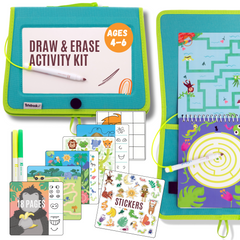As a CPST, I get a lot of questions about car seats. Each year I volunteer with Texas Children's Hospital Injury Prevention Team to help families install car seats. From this experience, I’ll let you in on a secret: Almost everyone gets something wrong the first time.
That’s not because parents and caregivers don’t care. It’s because car seats, seat belts, and vehicles all have slightly different designs. The rules for installation can be surprisingly specific.
According to national studies, nearly half (46%) of car seats and booster seats are used incorrectly. But misuse doesn’t always mean a total failure. Often, it’s one small detail that changes how well the seat protects your child in a crash.
So what’s the most common mistake we see as CPSTs?
The #1 Mistake: A Car Seat That Isn’t Tight Enough
When a car seat is installed, it should move less than one inch side-to-side or front-to-back when you tug firmly at the belt path. If it wiggles more than that, it’s too loose, and that looseness can make a big difference in a crash.
Here’s why:
In a collision, your car goes from moving to stopped in just a fraction of a second. Your child’s car seat is designed to “ride down” that force, which means it slows the movement of your child’s body so their internal organs and spine stay protected.
But if the seat isn’t tight, the crash forces act on both the seat and the child, allowing too much motion. That can mean the harness or the shell of the car seat takes the hit instead of the car’s safety system doing the job.
Why This Happens
Many parents assume the seat belt automatically locks when they buckle it, but that’s not always true. Only seat belts that “lock at a fixed length” are safe for car seat installations.
Here’s what often goes wrong:
-
The seat belt retractor (the mechanism that gathers and stores the belt) is not switched into the locking mode.
-
The seat belt is pulled tight but allowed to loosen gradually during normal driving.
-
Parents use the wrong belt path for the car seat’s direction (rear-facing vs. forward-facing).
-
The LATCH system is used beyond the child’s or seat’s weight limit, reducing effectiveness.
How to Check If Your Seat Belt Locks
Check your manual to determine if your car seat requires "locking" the seat belt, when installing your car seat with a seat belt (which differs from installing with the lower anchors/LATCH system). Some seats have "built-in" lockoffs, and you may not need to lock the seat belt. But if yours requires a "locked" seat belt, here's a simple 3-step “lockability test”:
-
Pull the shoulder belt all the way out from the retractor, slowly and gently.
-
Let it retract back in a few inches while listening for a clicking sound (you'll hear tick, tick, tick).
-
Try to pull it back out again.
-
If it won’t pull out, congratulations, it’s now in the locking mode.
-
If it still slides freely, your seat belt is in non-locking mode, and you’ll need to use another method (like a locking clip or the LATCH system, if allowed).
-
(If your car was made before 1996 in the U.S. or 2015 in Canada, the seat belts may not meet the “lockability requirement” at all, so double-check your vehicle manual.)
How to Fix a Loose Installation
Here’s what to do:
-
Check the movement of the car seat at the belt path: Grip the car seat firmly at the belt path and pull. It should move less than 1 inch.
-
If it moves too much:
-
Engage the seat belt’s locking mode (or use the built-in lock-off on the car seat).
-
Push down on the seat while tightening.
-
Check your recline angle if the seat is rear-facing.
-
-
If you’re installing using lower anchors (LATCH): Make sure both connectors are attached and tightened, and check your car and seat’s combined weight limits for LATCH use.
Even small adjustments, like pulling the belt tighter while pressing on the seat, can make a big difference in security.
“Doing It Right”
Most caregivers want to do the right thing. They just need good, clear information.
If your seat has a little wiggle room right now, don’t panic. You’re not alone, and it’s an easy fix.
A correctly installed car seat:
-
Stays snug with minimal movement at the belt path,
-
Uses the right belt path for the direction it’s facing, and
-
Has the correct recline angle for your child’s age and size.
Final Takeaway
The #1 mistake isn’t being careless. It’s not knowing that “tight” means less than one inch of movement.
Once you know that, you’re already ahead of most families on the road.
If you’re unsure about your setup, reach out to a Certified Child Passenger Safety Technician (CPST) in your area. A quick 20-minute appointment can make all the difference in a crash.











Leave a comment